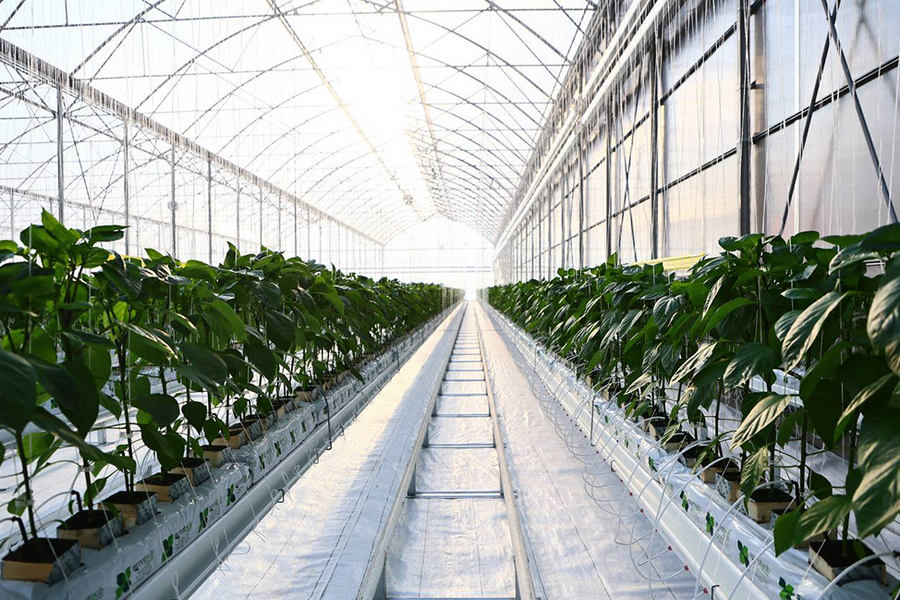
After visiting Rolling Greens and The Tropics, Inc, I headed to the (not so) new LA location of the San Francisco giant, Flora Grubb Gardens. This was my final stop during our mid-November trip.
I’ll be honest, my expectations were low. The buzz I’d heard about this location wasn’t all that positive. I think someone had also told me getting there wasn’t easy. They were right. Left turn against traffic, another immediate turn that wasn’t obvious, aye yi yi! I could see it, but how to get to it!? Thankfully I finally made the right combination of turns.
In addition to the traffic and street issues, the location also had a few interesting deep drainage ditches that broke up the flow. You can see one of them above, here’s another. Lots of ice plant…
Odd location (and extreme wind that day) aside, I thought this location was (almost) as magical as the original. I mean let’s face it, our standards are much higher now than when the original Flora Grubb opened in SF back in 2007.
There were many plants I would have loved to have taken home with me. Agave victoriae-reginae…
Agave ‘Blue Glow’
Leucospermum gueinzii
Leucospermum ‘Veldfire’
Leucadendron salignum ‘Winter Red’
Labeled as purslane tricolor jewel…
Jelly beans!
Over on Instagram I raved about the way made the space and I will do so here too. They were fantastic.
Agave xylonocantha ‘Swordfish’
Blue, powdery blue.
There were several gorgeous Cyathea cooperi in the mix of shade plants.
Tetrapanax! $79 for a 3 gal pot.
Lots of beautiful bromeliads, I really wanted to take a couple home, but didn’t want to pay to check a bag, so they stayed.
This was interesting to see, after drooling over the many Deuterocohnia brevifolia at The Tropics, Inc. This little planting in a rock pot was selling for $149.
Euphorbia evansii (only $12.99)
Mammillaria spinosissima
Cleistocactus colademononis
Inside the small building that fronted the space I spotted these ceramic containers from .
If this one had been green or brown it would have been very hard to leave it behind…
To receive alerts of new
danger garden posts by email,
subscribe here. Please note: these are sent from a third party, their annoying ads are beyond my control.
All material © 2009-2024 by Loree L Bohl. Unauthorized reproduction prohibited and just plain rude.




